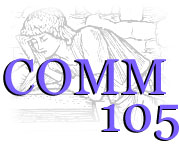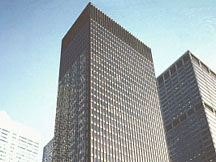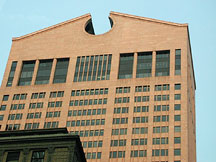
Office: HGH 210; phone: (408) 924-5378
Email: wooda@email.sjsu.edu
Web: http://www.sjsu.edu/faculty/wooda

|
Dr. Andrew Wood Office: HGH 210; phone: (408) 924-5378 Email: wooda@email.sjsu.edu Web: http://www.sjsu.edu/faculty/wooda |
At this point, having surveyed the modern self from a philosophical standpoint, it is necessary to consider modernity in its own context. What is modern society? Shall it be known by its literature, its architecture, its leisure, its consumerist ethic, its technology? Stephen Toulmin sheds some light onto this question by "dating" modernity and proposing that its primary contribution to our evolving conception of self is the notion that rationality becomes its own virtue. However, what happens when even that conflation of rationality and virtue fails? Many theorists of self and society have concluded that modernity can no longer account for the struggles and opportunities of contemporary life. Like the standard model of physics which fails to reconcile both quantum physics and relativity, the contradictions of today's world can no longer be ignored by grand narratives. So, if postmodernity eschews grand narratives, what answers can it provide to questions of communication, self, and society?
 The Seagram Building - Modern Architecture in the International Style. Image Copyright Mary Ann Sullivan. Click image to see more. |
 Former AT&T Building - Postmodern architecture.
Image Copyright Galinsky. Click image to see more. |
Reading: Toulmin's Cosmopolis (excerpt)
Notes: Modernism and Postmodernism
Remember: Response Paper One is due February 14